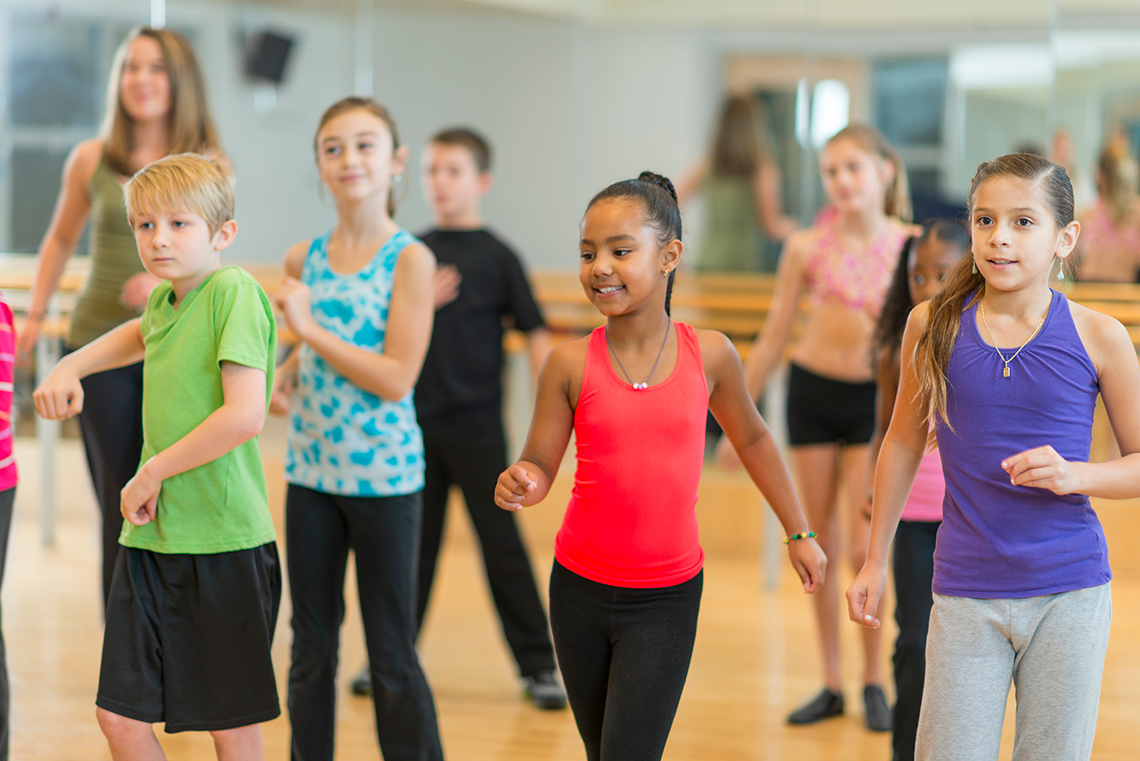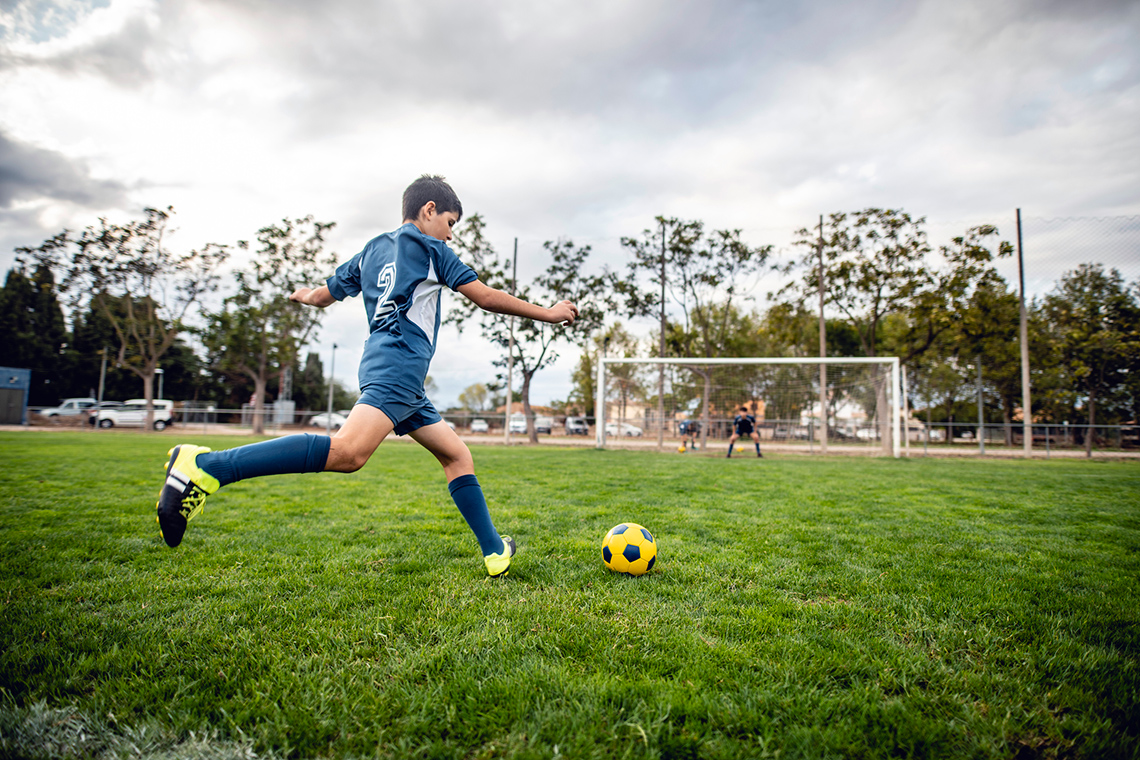Minds On
Daily Physical Activity

Participating in daily physical activity for at least 20 minutes a day helps support a healthy body and a healthy mind.
Reflect on your typical daily routine. As you do, record any parts of your day that involve physical activities. These types of activities can include:
- doing chores that involve repetitive movements such as vacuuming, dusting, raking, cutting the grass, etc.
- moving your body from one spot to another to get yourself around
- exercise, such as physical warm-ups or fitness routines
- participating in active games or sports
- dancing
Record any daily physical activity in a method of your choice.
Action
Warming up

The Canadian Physical Activity Guidelines recommends that youth ages 12-17 should get at least 60 minutes of moderate to vigorous physical activity every day.
It is also recommended that vigorous activities, and ones that strengthen your muscles, are performed at least 3 times a week.
Reflect on whether you’re meeting these guidelines each week. If you’re falling short of these targets, consider what changes can you make in your life to reach these goals?
To lessen the possibility of injury and to prepare our bodies for physical activity, let’s perform a few warm up activities. An effective warm up targets full body movement.
Follow this 5-exercise routine to raise your heart rate slowly and prepare your muscles for greater workloads. Alterations can be made to any of the exercises if needed.
Safety
Before you begin, consider these safety precautions:
Warm Up
Warm up
Press the following tabs to access your warmup activity.

A child lifting their knee to their chest. Their other leg is straight and they are standing up tall.
Raise your leg, and with your hands, pull your knee to your chest. Alternate left and right legs. Complete 10 knee hugs per leg. You can also try to perform this exercise while walking.

Person with their arms raised. They rotate their arms backwards, make a circle and bring their arms to the front again.
Rotate your arms slowly in small circles. Make the circles progressively bigger the longer you perform this exercise. Aim for 15 seconds of forwards and 15 seconds of backwards circles.

A person with their hands on their waist, rotating their hip to one side.
Place your hands on your hips and rotate them clockwise 15 times and counterclockwise 15 times.

Bend from your hips and extend your body while attempting to touch your toes. You should feel a stretch at the back of your legs. Go to a point where you feel comfortable and hold for 30 seconds.

While standing (or sitting), place your feet flat on your ground. Raise your heels off the ground and push up with the balls of your feet. Slowly lower back to the ground. Perform 15 calf raises.
Get moving!
Did You Know?
Did you know?
Moderate activities are ones that raise your heart rate but where you can still talk during the activity. If you were to rate the level of exertion, (0 being no activity, 10 being intense activity), it would be in the 5-6 range. Vigorous activities are ones where you cannot say more than a few words before pausing for a breath. These are activities that when performed, can be rated in 7-8 exertion range.
When performing moderate to vigorous physical activities, your heart and lungs are working harder to supply your working muscles with the oxygen it needs to meet the increased demands on your body. As a result, you may start to sweat or feel your body heating up. Always make sure to have a water bottle nearby to stay hydrated.
If you like to go for walks, swim, skip, bike ride, participate in team or individual sports etc., these are all great ways to stay active. You’re more likely to remain active for life when participating in activities you enjoy.
Don’t have much space to work-out? No problem. Follow these simple chair aerobic exercises you can perform anywhere! Please note: work at your own pace! Modify any exercise which may be too difficult.
Press the following tabs to access Circuit 1-Lower Body.

With both hands holding the back of a chair, kick your heel of the right foot back towards your backside and return to the starting position. Repeat with both legs 15 times.

Take a large step forward, bend the front knee and extend the back knee. Return to the starting position and repeat with your opposite leg. Perform 10 lunges on each leg.

Stand with your back to the chair. With your feet shoulder width apart, bend your knees and lower your body just above the seat height. Return to the starting position. Perform 15 squats.

A person standing beside their chair with their left leg lifted to the side.
While standing (or sitting) beside your chair lift your leg to the side as far as possible and return to the starting position.

While sitting, place both feet on the floor. Raise both feet off of the floor and straighten your legs so that they are parallel to the floor. Hold for 5 seconds and return your feet to the floor.
Press the following tabs to access Circuit 2-Upper Body.

Sit (or stand) with your arms bent slightly at the elbows at chest height. Apply resistance by imagining you are pulling apart an elastic bank between your hands to move both arms backwards. Slowly return to the starting position. Perform 15 flies.

A person standing holding weights. Their arms are to the side at shoulder height. Then they are bending arms inward.
Extend your arms to the side at shoulder height. With some resistance (e.g. a book, soup can, or other item), bend arms inward and return to the starting position.

A person seated. They are lifting their feet off the floor while making small circles with their arms.
While seated, bounce your feet by lifting them off the floor together, while making small circles with your arms. Perform for 30 seconds.

Sit with both feet on the floor. Place your hands on both sides of the chair and push your body weight off of the chair. Hold for 1 second and return down. Repeat 10 times.

A person sitting with their arms up and one arm extended in front of their body.
Stand or sit and simulate a punching-bag action. Begin with the arms up and extend one arm in front of the body. Repeat with the opposite arm. Alternate arms and repeat for 30 seconds.
Cool Down
Cooling down
Cooling down following physical activity is an important step to gradually reduce your heart rate to its resting rate as well as improve the recovery of your muscles following their increased workload. Perform the following exercises as part of your cool down routine today.
While performing your cool down, reflect on how you will be physically active tomorrow. Allocate time during your day for a short warm up prior to your activity and an appropriate cool down to help your body recover.
Press the following tabs to access your cool down.

With relaxed arms, roll your shoulder forward, backwards, up and down 10 times each.

Person sitting at the front edge of the chair, bent forward, touching their hands to the floor.
Sit on the front edge of your chair and bend forward trying to reach your hands to the floor. Hold for 30 seconds and return to the starting seated position.

Place your right hand on your right shoulder and your left hand on your left shoulder. Perform a circular motion with your elbows. Complete 10 clockwise rotations and 10 counterclockwise rotations.

From a seated position, raise one leg off the ground and slowly perform 10 clockwise and counterclockwise circles with each leg.
Consolidation
Categories of daily physical activities

Use your learning and participation in this learning activity to answer these questions about daily physical activity.
Select the correct answer, then press ‘Check Answer’ to see how you did.
Making a daily physical activity plan
You have been given some examples of warm up activities, cool down activities, and exercises that can help to provide at least 20 minutes of daily physical activity. In the Minds On you were able to reflect on types of daily physical activities that you possibly engage in during the day.
Make a list of the activities that could become a daily part of your physical activity. Choose activities that you enjoy, that are possible in your living and playing spaces, and are just right for you.
You can record your activities in a method of your choice.
Consider where to display these activities so they are available whenever you need to be reminded of them.
Reflection
As you read through these descriptions, which sentence best describes how you are feeling about your understanding of this learning activity? Press the button that is beside this sentence.
I feel…
Now, record your ideas using a voice recorder, speech-to-text, or writing tool.